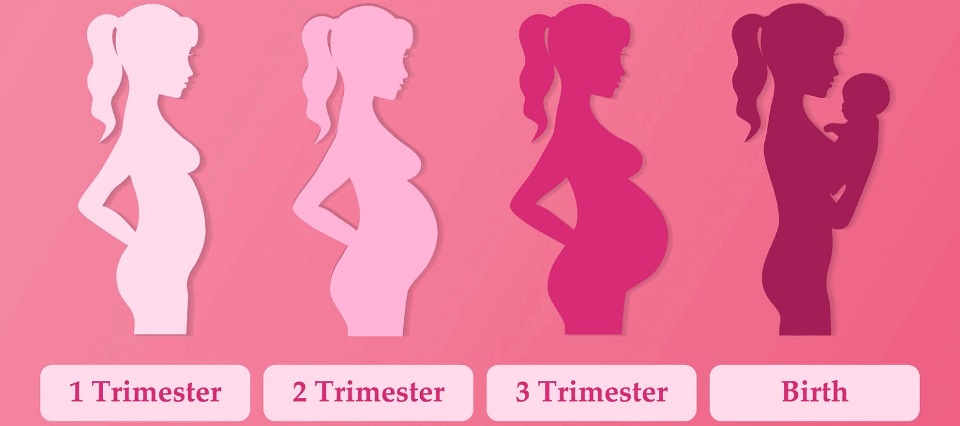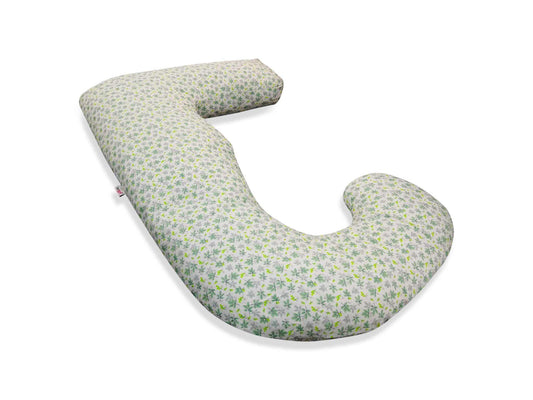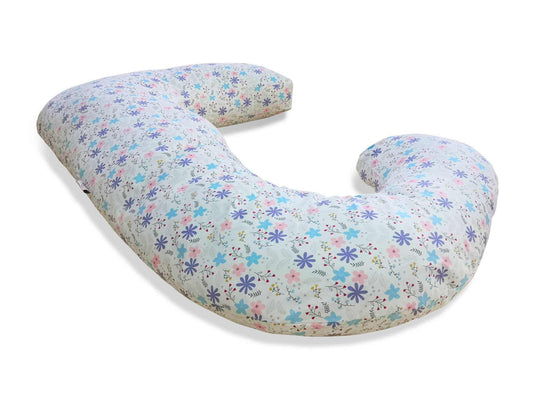The Third Trimester of Pregnancy | Nurturing the Journey's End

A Journey Through Pregnancy, a Three Part Series - Part Three
Nurturing the Journey's End: Essential Aids for the Fulfilling Third Trimester
This is the final part of our three part series on the three stages of pregnancy.
The third trimester of pregnancy marks the final stretch of pregnancy, brimming with excitement and anticipation as the baby's arrival draws near. In this part of the series, discover essential aids to support pregnant women during this crucial stage:
1. Birth Preparation Classes
During the third trimester of pregnancy, encouraging expectant mothers to take part in birth preparation classes can make a profound difference in their readiness and attitude toward the upcoming birth. By being well-prepared, women can approach labor and delivery with greater confidence and a sense of control, leading to a more positive overall experience
a. Labor and Delivery Techniques: Birth preparation classes offer detailed instruction on various labor and delivery techniques. These include positions for labor that may help ease discomfort, strategies for effective pushing, and ways to utilize gravity-assisted positions to facilitate a smoother delivery. Understanding these techniques can demystify the process of childbirth and provide practical tools that empower women during labor.
b. Pain Management Options: One of the key components of these classes involves exploring different pain management options. This includes both medical interventions such as epidurals and natural methods like breathing exercises, hydrotherapy, and the use of birthing balls. Familiarizing oneself with these options ahead of time allows mothers-to-be to make informed decisions about their pain management during labor.
c. Postpartum Care: Additionally, birth preparation classes go beyond the delivery room, offering guidance on postpartum care. This crucial segment includes how to care for the perineum after birth, the importance of pelvic floor exercises, and managing the emotional and physical changes post-delivery. This education is vital for a healthy recovery and can significantly influence the mother’s well-being in the weeks following childbirth.
d. Empowering Women: Education through these classes empowers women with the knowledge and confidence needed to face childbirth. Knowing what to expect and having strategies in place can alleviate fears and anxiety, contributing to a more positive and fulfilling birthing experience. Moreover, these classes often provide a forum for women to ask questions in a supportive environment and connect with others who are at similar stages of their pregnancy journey.
First pregnancy? Invest in a body pillow built to last - through every stage and every pregnancy.
2. Enhancing Labor Preparedness with Perineal Massage
Perineal Massage and Preparing for Labor:
As the due date approaches, preparing the body for the physical demands of childbirth is crucial. One effective technique for expectant mothers is perineal massage. This practice involves gently stretching and massaging the perineal tissue—the area between the vagina and the anus—which can be highly beneficial in the weeks leading up to childbirth.
a. Benefits of Perineal Massage: The primary goal of perineal massage is to increase the elasticity of the perineum, thereby reducing the likelihood of tearing during delivery. Regular massage from approximately 34 weeks into the pregnancy can significantly prepare the tissue to stretch more easily during childbirth. This preparation not only reduces the potential need for surgical interventions, such as episiotomies, but also can lessen the severity of natural tears that might occur.
b. Technique and Frequency: Perineal massage can be done by the pregnant woman or her partner, typically starting around the 34th week of pregnancy. It involves applying a safe, lubricating oil to the fingers and gently stretching the perineum for a few minutes at a time. Health professionals often recommend performing this massage several times a week to maximize its effectiveness.
c. Enhancing Body Flexibility: Beyond reducing the risk of tearing, perineal massage can also enhance overall flexibility in the pelvic area. This increased flexibility can be beneficial during labor, allowing for more comfortable positioning and easier movement as the body adjusts to the birthing process.
d. Psychological Benefits: Engaging in perineal massage can also offer psychological benefits. It allows the mother to actively participate in her own preparation for childbirth, which can help alleviate anxiety about tearing and labor pain. This proactive approach gives the expectant mother a sense of empowerment and readiness for the physical challenges of childbirth.
3. Mastering Calm with Relaxation and Breathing Techniques
Relaxation and Breathing Techniques:
As the third trimester progresses and the due date draws near, the importance of managing stress and anxiety becomes paramount for expectant mothers. Implementing effective relaxation and breathing techniques can significantly ease the emotional and physical strains of the final weeks of pregnancy.
a. Importance of Deep Breathing: Deep breathing exercises are a cornerstone of stress management during pregnancy. These techniques help regulate the body's response to stress by slowing down the heartbeat and lowering blood pressure, thereby promoting a state of calm. Regular practice can greatly improve emotional resilience and decrease feelings of anxiety, which are common as the birth approaches.
b. Visualization Techniques: Visualization is another powerful tool that can be used to foster relaxation. This technique involves imagining a peaceful and soothing environment or visualizing a positive childbirth experience. It can help pregnant women mentally prepare for labor, reduce fears associated with childbirth, and create a sense of peace and well-being.
c. Mindfulness Meditation: Practicing mindfulness meditation can also be highly beneficial during this time. It involves staying present and fully engaging with the current moment without judgment. This practice can help manage pregnancy-related anxiety by focusing the mind and reducing the tendency to worry about future uncertainties related to childbirth.
d. Routine Practice: Incorporating these techniques into a daily routine can help pregnant women cultivate a habit of relaxation that not only aids in managing day-to-day stress but also prepares them for a smoother labor process. Health professionals often recommend dedicating specific times each day for these practices to enhance their effectiveness.
e. Classes and Resources: Many hospitals and community centers offer classes in relaxation and breathing techniques specifically tailored for pregnant women. These classes provide guidance from experienced instructors and allow women to practice in a supportive group setting, which can enhance their confidence in using these techniques effectively.
Encouraging expectant mothers to engage in relaxation and breathing exercises can provide them with vital tools to navigate the challenges of late pregnancy and childbirth. These techniques not only promote a sense of calm but also equip mothers with strategies to maintain composure and comfort during labor, contributing to a more positive birthing experience.
4. Optimal Nutrition for Late Pregnancy and the Importance of Staying Hydrated
During the third trimester of pregnancy, the significance of maintaining a balanced and nutrient-rich diet cannot be overstated. As the baby experiences significant growth, the demand for nutrients that support healthy development increases. It is crucial for expectant mothers to focus on including a variety of nutrient-dense foods in their daily meals to ensure both their well-being and the health of the growing baby.
a. Nutrient-Rich Foods: A balanced diet during this stage should include plenty of leafy greens, which are high in vitamins A, C, K, and folate. Lean proteins such as chicken, fish, tofu, and legumes are essential for the growth and repair of tissues and will support the baby’s muscle development. Whole grains like oats, quinoa, and brown rice provide necessary fiber, which helps prevent common pregnancy issues such as constipation and also contributes to steady energy levels throughout the day.
b. Importance of Hydration: Alongside nutrition, hydration plays a pivotal role in maintaining health during the third trimester. Adequate fluid intake is vital for supporting expanded blood volume and amniotic fluid levels. It also helps to alleviate common discomforts of late pregnancy, such as swelling, constipation, and urinary tract infections, which can become more prevalent as the body continues to accommodate the growing baby.
c. Practical Tips for Hydration: Pregnant women should aim to drink at least 8-10 cups of water a day, and even more if they are active or if the weather is warm. Incorporating foods with high water content, such as cucumbers, strawberries, and watermelon, can also contribute to overall fluid intake. It’s beneficial to carry a water bottle at all times as a reminder to stay hydrated.
5. Managing Sleep Discomforts During the Third Trimester of Pregnancy
As the baby grows larger during the third trimester, many expectant mothers find that achieving a comfortable sleeping position becomes increasingly difficult. This period often brings a host of sleep-related challenges due to the additional physical strain on the body. However, there are effective strategies to manage these discomforts and ensure restful sleep, which is crucial for both maternal and fetal health.
a. Using Supportive Pillows: One of the most effective ways to enhance comfort during sleep is the use of extra pillows or specifically designed pregnancy body pillows. These pillows can be strategically placed to provide support where it's needed most: under the abdomen to support the baby's weight, between the knees to align the hips and relieve pressure on the back, or behind the back to prevent rolling. Pregnancy body pillows, especially those shaped to contour the body, such as U-shaped or J-shaped pillows, can significantly improve sleep quality by maintaining proper alignment and reducing strain on the spine and hips.
b. Promoting Proper Sleep Hygiene: In addition to physical supports, promoting good sleep hygiene is essential. This includes maintaining a regular sleep schedule, creating a comfortable sleep environment that is cool, dark, and quiet, and avoiding stimulants like caffeine close to bedtime.
c. Encouraging Naps: Due to the increased energy demands of the third trimester, napping during the day can be particularly beneficial. Short naps, ideally no longer than 30 minutes, can help alleviate fatigue without disrupting nighttime sleep patterns. Encouraging expectant mothers to listen to their bodies and rest when needed can help maintain energy levels and reduce overall physical stress.
d. Adjusting Sleeping Positions: It's also helpful to guide pregnant women on the best sleeping positions for late pregnancy. Sleeping on the left side is often recommended to improve circulation to the heart and provide the best blood flow to the fetus, uterus, and kidneys. Avoiding back sleeping can help prevent discomfort and potential complications.
6. Finalizing the Birth Plan and Nesting: Preparing for Arrival
As the third trimester progresses, finalizing the birth plan and preparing for the baby's arrival become pivotal activities that can provide comfort and clarity for expectant mothers.
Finalizing the Birth Plan: A birth plan is a crucial document that outlines a mother's preferences for labor and delivery. It serves as a communication tool between the pregnant woman and her healthcare providers, ensuring that her wishes are understood and considered. Finalizing this plan involves detailed discussions about available options for pain management, labor positions, and interventions that may be necessary during delivery. It's important for expectant mothers to remain flexible as circumstances during labor can change, but having a well-thought-out plan can reduce anxiety and help mothers feel more prepared for childbirth.
Support should be provided to help pregnant women articulate their preferences and needs. Encourage them to ask questions and express any concerns they might have with their healthcare providers. This open dialogue ensures that the birth plan aligns with the best medical practices and the health requirements of the mother and baby.
Nesting and Preparing for Baby: Alongside finalizing the birth plan, many women experience a surge of nesting instincts as the due date nears. Nesting—an instinctual urge to prepare the home for the new baby—can be both therapeutic and practical. It involves organizing the nursery, stocking up on baby essentials such as diapers, wipes, and clothing, and setting up a safe and comfortable space for the newborn. Encouraging expectant mothers to embrace this natural inclination can help them feel more prepared and in control, easing any lingering anxiety about the impending birth.
This time can also be used to ensure that all necessary supplies for the hospital stay are ready and packed. Items like comfortable clothing, toiletries, snacks, and important documents should be included in the hospital bag. Preparing this bag in advance can help avoid last-minute rushes and ensure a more relaxed transition to the hospital when labor begins.
Further Reading:
Part One: Nurturing the Beginning: Essential Aids for a Healthy First Trimester
Part Two: Blossoming into Maternity: Essential Aids for the Transformative Second Trimester
Pregnancy Stages - Image Credit Beaumont Hospital

















